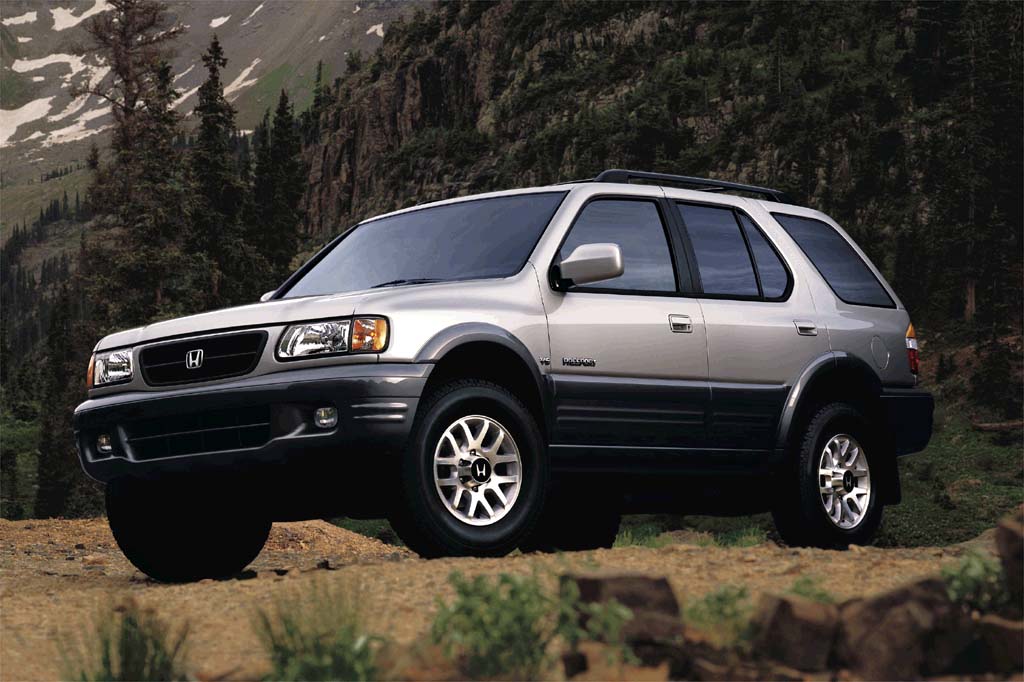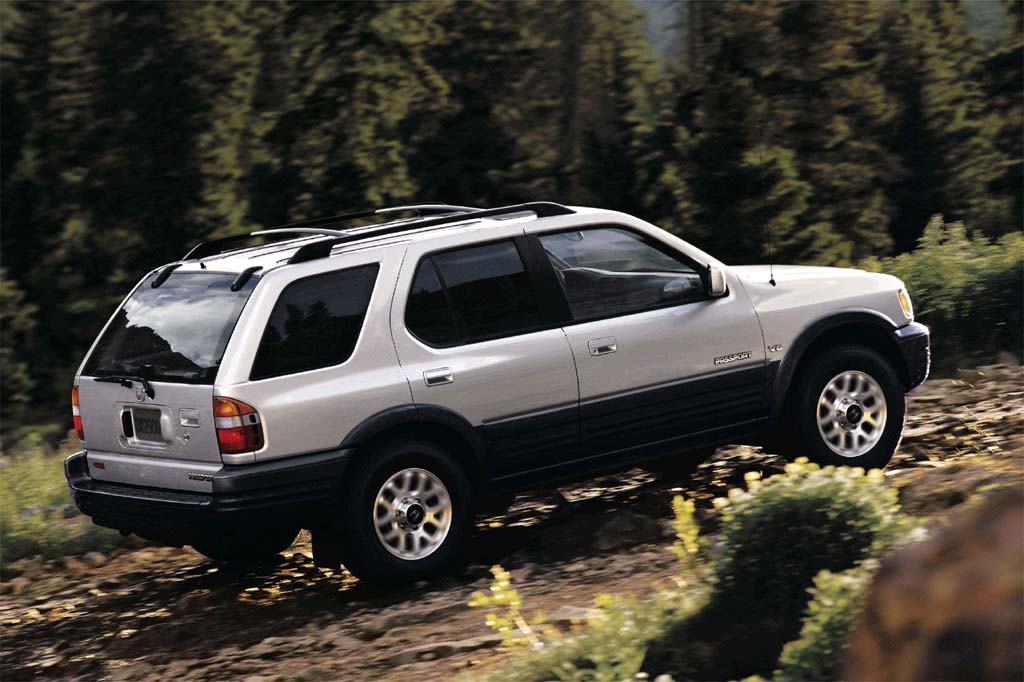| Midsize SUV; Built in USA |
|
|
| Good condition price range: $1,900 – $5,000* |

1998 Honda Passport

2000 Honda Passport

2000 Honda Passport

2001 Honda Passport LX

2001 Honda Passport EX
| Pros: |
|
| Cons: |
|
Like the Rodeo, Honda’s SUV emphasizes the “sport” in sport-utility. But Isuzu’s version has outsold the Passport by almost 3-to-1. Lack of outstanding features sets neither one above the competition, and high prices are an obstacle.
Overview
Following on the 1994-97 Passport, Honda introduced a second-generation version for ’98. Similar to Isuzu’s Rodeo, the midsize SUV was slightly larger than before, and delivered more V6 power. Passports were built at a Subaru Isuzu plant in Indiana, right alongside the nearly identical Isuzu Rodeo. Passports differed mainly in model choices, cosmetic details, and available features.
Two models went on sale: LX and upscale EX, each available with rear-drive or on demand 4-wheel drive. An improved version of Isuzu’s 3.2-liter twin-cam V6 engine, packing 15 more horsepower and 26 more pound-feet of torque than before, went under the hood. An automatic transmission was standard on EX and an option on LX, replacing the standard 5-speed manual gearbox. The 4×4 models had a 2-speed transfer case with separate low-range gearing, but 4WD now engaged electrically via a dashboard button instead of using a mechanical lever. As in prior Passports, 4WD was not for use on dry pavement, but it could be shifted between 4-High and 2WD at any speed up to 60 mph.
Wheelbase on this Passport shrunk by 2.1 inches, but the vehicles measured about an inch longer overall. It was almost 4 inches taller and 1.4 inches wider. Curb weight rose only slightly. Engineering changes included standard antilock braking and a sturdier, newly designed frame. Rack-and-pinion steering ousted the less-precise recirculating-ball setup, while a new coil-spring rear suspension replaced the previous leaf springs.
In the LX, the spare tire stowed under the rear cargo floor. With an EX, the spare sat on a swing-away external carrier. The tailgate now was hinged at the left, below a separate glass liftgate. Styling was evolutionary, and rivals included the Chevrolet Blazer, Ford Explorer, and Toyota 4Runner. A Passport could tow up to 4500 pounds, when using electric trailer brakes.
Yearly Updates
| 1999 Passport Only minor changes were evident in the reworked Passport’s second season. Rear cupholders were new, but other revisions were focused on trim and colors. |
| 2000 Passport Minor appearance alterations, front and rear, could be seen on the 2000 models. Interior trim also was slightly revised. New luxury EX-L versions had standard leather upholstery, 2-tone paint, color-matched fender flares and bodyside moldings, and an in-dash 6-disc CD changer. The 2-wheel-drive LX gained standard 16-inch tires. |
| 2001 Passport EX-L models got a 4-way power driver’s seat and 4WD versions got limited-slip differential for 2001. All models got floormats, rear child-seat tethers, 8-speaker audio, and UV-reflecting front-door and tailgate glass as standard equipment this year. |
| 2002 Passport There were no significant changes for 2002. |
